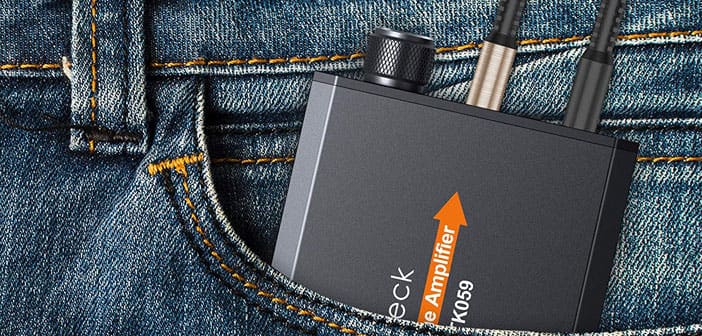
Which type of headphone amplifier to buy among the products available on the market? We often use the integrated amplifier in our headphones, especially if we have an economical range model.
But for the audio maniacs, those who perhaps have a pair of excellent professional over-ear headphones, having an external amplifier is almost a must to return all the smallest nuances of sound during playback.
Amplification by itself is not merely about increasing the volume, as you might believe. Still, it produces a general improvement in sound quality and the enhancement of some particular frequencies, usually the lower ones.
So let’s see what the most important characteristics of a headphone amplifier and the main requirements that a valid product must meet are.
The selection criteria
We start from the technical parameters that make the difference and choose the best headphone amplifier based on our needs and requirements. The main product requirements to look after are:
Impedance: indicates the resistance encountered by the electrical signal before it is converted into a sound wave and is measured in Ohms. The higher the impedance of the headphones, the cleaner, sharper the sound that comes out of them. This value is essential to understand which amplifiers are compatible, which must normally have an impedance 8 times lower than headphones.
Sensitivity: also known as sound pressure, it indicates how efficiently the headphones can convert the electrical signal into acoustic. In practice, it allows you to understand how high the playback volume of the headphones will be. Measured in decibels, this is an important criterion for understanding how much benefit the amplifier will bring to our listening, so this value is also closely related to headphones.
If you have headphones with high sensitivity, you will therefore need to buy a semi-professional amplifier. Otherwise, the improvement will not be appreciable, while a lower performance product may be fine for low-end headphones.
The important thing is always that the impedance is eight times lower than that of headphones, so for example, a 32 Ohm earphone will need amplifiers with a value that does not exceed 4 Ohms.
The Types of Amplifiers
There are different types of amplifiers on the market, made with different technologies and which we can basically identify in two large families of models, namely:
- Tube amplifiers
- Solid State Amplifiers
The tube amplifiers work in high voltage, using thermionic tubes, and have always been considered a top of the range, hence the high cost: they are ideal for high impedance headphones, but they are rather bulky and consume a lot of energy, and tubes they have a limited life span, between 3,000 and 5,000 hours.
To make the best use of this type of amplifier, you need to implement some precautions, such as avoiding excessive overheating, putting the amplifier in a place away from humidity, and enough space for cooling.
Solid-state amplifiers, on the other hand, have a more sustainable quality-price ratio, work with transistors, are space-saving, and are ideal for low-impedance headphones.
They require little maintenance because they do not tend to overheat, and for this reason, they are the most popular and recommended product. However, audio maniacs, in terms of overall quality they are inferior to vacuum tubes.
The connections
Whatever type of amplifier you choose, solid-state or tube, in desktop or portable format, for our headphones, we must also take care of the type of connection as a decisive factor for the final purchase choice. The possible connections are:
- Mini-jack
- Optical input
- USB or Micro USB input
- Cannon or XLR
- Balanced audio output
Some of these connections are mostly the prerogative of professional products, suitable for high quality and high-cost models, while the most common and used are those with jack or USB. At the same time, the optical input is the preferred choice for Blu-ray players and smart TV.
How much?
The price of a headphone amplifier depends on various variables, in addition to those indicated by the company that made the product and the materials used, so one thing is to spend for a product with a prevalence of plastic and another instead of amplifiers that make I also use wood, aluminum or other more resistant materials.
Currently, on the market, it is possible to find products with different cost ranges. For example, we have cheap amplifiers ranging from about $15 to $80. Others in the mid-range can cost up to $200, while the high-end ones are still designed for non-use professionals, providing for an outlay calculated in several hundred dollars.
If, on the other hand, we want to move towards a professional-level headphone amplifier, the investment to be made can well exceed one thousand dollars, in addition to requiring specialized knowledge on the construction and maintenance of a high-fidelity system.
Product prices and availability are subject to change. Any price and availablility information displayed on Amazon at the time of purchase will apply to the purchase of any products.